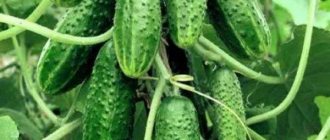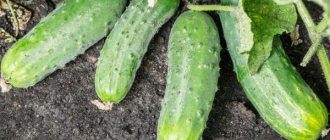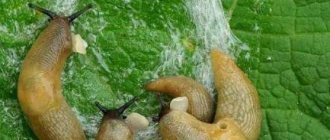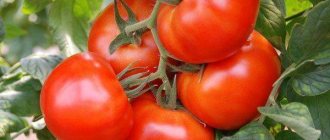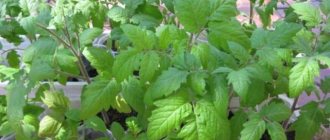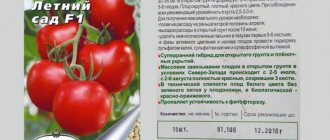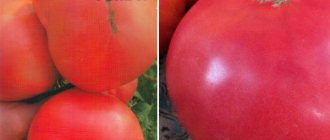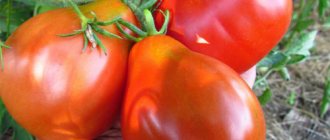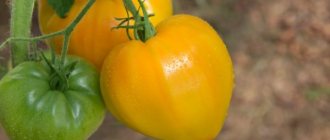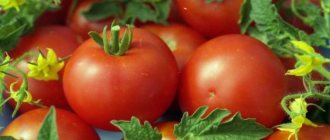Lukhovitsky F1 is a hybrid that combines all the properties for which the famous cucumbers from the city of Lukhovitsy are valued. Its appearance and taste are in no way inferior to the same standard cucumbers, and its productivity and resistance to adverse conditions are genetically determined at a high level.
| Landing location | Ripening time | Mode of application | Fruit length | Group | Fruit smoothness | Pollination method |
| Universal | Early ripening (35-45 days) | Universal | Medium - from 10 to 15 cm | Hybrid | Slightly lumpy | Parthenocarpic |
Advantages and disadvantages
Advantages:
- compactness and evenness of shape;
- same size;
- the highest level of productivity;
- the crunch remains after heat treatment;
- early maturation;
- resistance to most diseases;
- transportability;
- the ability to plant seeds in open soil or directly in a greenhouse;
- excellent keeping quality;
- excellent taste.
Among the disadvantages, it is worth noting that it is demanding in terms of care, so it will be difficult for beginners to get a decent harvest in the first year.
Main characteristics
The hybrid is approved for cultivation in the 1st-7th regions: Northern, Northwestern, Central, Volga-Vyatka, Central Black Earth, North Caucasus and Middle Volga in protected soil conditions (under film covers) in private farms.
| Main settings | Description |
| Ripening time | Super early - begins to bear fruit 38-40 days after full germination |
| Productivity | Yield is about 9.7-10.5 kg/m2 of marketable fruits |
| Versatility | Zelentsy is used as salad, pickling, canning |
| Disease resistance | Resistant to olive spot and powdery mildew; tolerant to LMR and root rot |
Let us consider in detail the features and advantages of this hybrid.
Features of planting and care
The Lukhovitsky hybrid loves high humidity, warm temperatures and oily soil. These indicators are the key to high productivity.
Seed preparation
There is no need to specially prepare the seed material, since the grains are sold already processed. Additionally, you can place the seeds in a weak solution of manganese or warm water.
Soil selection and preparation
The soil for Lukhovitsky cucumber should be oily. They prepare it starting in the fall:
- In the fall, you need to dig trenches (40 cm deep) for future beds. So that they can be easily found in the spring, each groove should be fenced with wooden sides. Humus is also added here and covered with soil.
- In the spring, warm beds are formed in which seeds or seedlings are sown. Stages of work:
- scald the trenches with boiling water;
- remove the soil with humus;
- line the bottom with plastic film, onto which pour urea and sawdust (height 11-12 cm);
- heat the manure to 55 degrees, pour it on top;
- lay out the soil;
- cover with thick, dark-colored film;
- After 4 days, make holes in the top film in those places where seed material or seedlings will be planted.
Landing dates
The roots of the hybrid are located in the surface layers of the earth. This is why film is used at the bottom of trenches. If the seedling method of cultivation is used, then sowing is carried out around April, diving into open ground - after May 20 or in early June. Planting seeds for the garden is carried out at the end of the month of May.
Seedling growing method and features of keeping in a greenhouse
For seedlings, seed material is placed in peat briquettes measuring 10x10 cm. This is necessary so that the weak root system is not damaged when diving into open soil. The seeds are grown in greenhouse conditions. To do this you need to do the following:
- Place straw at the bottom of the greenhouse to maintain optimal temperature conditions.
- Earth mixed with humus and peat is poured on top.
- Next, the seeds are placed in a peat briquette or pot 5 cm deep, which are sprinkled with soil.
- The greenhouse is covered with 2 layers of film.
In such conditions, the seedlings should remain for 30-45 days, so the seed is planted when the snow has not yet completely melted.
Peculiarities:
- When the outside temperature stabilizes, the film opens during the day and closes again at night.
- Seedlings need to be watered as the soil dries out. It is not advisable to over-water it.
- The temperature in the greenhouse should not exceed +25 degrees, but should not fall below +23.
- Water the plants only with warm, settled water, preferably in the evening.
- The seedlings must be fed. The first time the usual concentration is reduced by 2 times, then it is carried out according to the standard dosage. As fertilizer, you can apply slurry from manure, chicken droppings, or use the preparations Kemira Universal, Sudarushka.
- When transplanted into open ground, seedlings deepen by a maximum of 20 cm.
Non-seedling method of cultivation and features of keeping in open ground
What rules should you follow:
- The gap between the bushes should be 30-50 cm.
- It is advisable to tie cucumbers on trellises.
- The soil should always be moist, but not wet. And after each watering, it is advisable to mulch directly around the bush.
- The area should be well lit.
- During planting, humus, chicken droppings or manure are poured into the holes.
- It is advisable to plant two seeds in one hole.
- The optimal air and soil temperature is +17-19 degrees.
- The soil needs loosening.
- Until the bushes are completely strong, they are covered with a thick film. At normal daytime temperatures, ventilation is carried out.
- When the plant begins to bear fruit, watering is done more often than during the formation of sprouts.
- As the bush grows, it is necessary to apply fertilizers (with potassium, phosphorus and nitrogen). Quite often, the universal remedy Ammofoska is used for this.
Loosening the beds is carried out very carefully, since the root system is located near the surface of the earth, which contributes to the weakening and death of the plant. The best option is mulching with organic matter.
Disease and pest control
In very rare cases, this hybrid is susceptible to cucumber diseases - only if the plant is neglected. The only problem that arises is powdery mildew. It is manifested by the formation of yellow or whitish spots on the lower leaves. Looks like plaque.
Find out how to deal with pests and diseases from the video:
This disease is a fungal infection, so the following methods of control and prevention are used:
- Infection can be prevented using Bordeaux mixture or Sulfaride solution. You can use the drugs Tiovit Jet, Oxychom, Ridomil Gold.
- To stop the spread process: Fundazol, Fitosporin, Topsin-M, Gamair.
- Modern preparations of fungicidal action: Bayleton, Kuproxat, Cumulus, Privent.
For active control, sulfur agents can be used, but in this case it is undesirable to do this, since they burn the leaf part. To avoid this, you need to reduce the recommended concentration of the active substance, that is, make the solution weaker.
Description
From the name (by the designation “F1”) it is clear that cucumbers are a first-generation hybrid (F from the Latin filli - “sons” and 1 - serial number). All cucumber hybrids were bred through long and painstaking work of breeders and are not related to GMOs. The main goal of creating hybrid forms is to achieve, as a result of crossing, the inheritance of the most valuable qualities of the parent varieties and their strengthening (heterosis). In the cucumber hybrid “Lukhovitsky F1” the selection achievements include:
- parthenocarpic development of fruits;
- exclusively female type of flowering;
- bunch formation of ovaries (1-4 per node);
- excellent taste of greens, ensuring versatility of use;
- lack of bitterness at the genetic level;
- precocity;
- productivity;
- disease resistance.
Many consider the main disadvantage of hybrids to be the high cost of seeds and the need to buy them annually, since collecting your own seed material from them does not make sense: the combination of parental characteristics is unstable and is not passed on to subsequent generations.
In the photo - packages with hybrid seeds from the original manufacturer (agro)
Parthenocarpic hybrids have a great advantage when grown in protected soil conditions, since their yield does not depend on the participation of insects in the pollination process. With parthenocarpy, the ovaries develop without fertilization, and seeds do not ripen in them. Therefore, the greens have almost the same size and appearance - they do not outgrow, do not turn yellow, and do not become coarse.
“Lukhovitsky F1” is one of the most popular cucumbers in the so-called “German shirt” - finely pimpled, densely pubescent, which are considered the best in pickling and preservation
On parthenocarpic hybrids, a large number of fruits are simultaneously filled, which ensures a high and consistent yield. “Lukhovitsky F1” has declared yield indicators of 9.7-10.5 kg/m2 or 6-8 kg per plant of greens with a leveled presentation. The first harvest ripens very early: approximately on the 38-40th day (although according to some sources on the 45-50th) after the appearance of full shoots. The plant has a female flowering type , that is, all flowers have ovaries, which are laid 1-4 per node. The central stem is not limited in growth ( indeterminate ) and produces a moderate number of lateral shoots. The leaves are green, medium in size.
Zelentsy are distinguished by the density of the pulp, the absence of voids and a pronounced crunch.
Gherkin-type greens are short (up to 12 cm long), weighing on average 95-110 g. They have an oval shape and a dark green color with blurry whitish stripes of medium length. The surface is densely covered with pimples-tubercles of small and medium size, dense brown pubescence. "Lukhovitsky F1" is one of the most popular cucumber hybrids in the "German shirt". Zelentsy have excellent taste without bitterness and a rich, fresh aroma, which makes them universal in use - salad, canning, pickling.
Thanks to the breaking off of numerous spines (in greens they are located not only on the tubercles, but also between them), the pulp inside is evenly salted and pickled
Densely pubescent greens do not have a high shelf life , that is, under normal conditions it is recommended to store them for no more than a day, in the refrigerator - 2-3 days. For processing, it is advisable to use cucumbers that are as fresh as possible and have not lost their natural juiciness and elasticity.
It is necessary to harvest greens regularly, although they do not tend to outgrow. Timely collection helps direct the plant’s energy to the formation and filling of new ovaries.
The hybrid variety is resistant to diseases: olive spot (cladosporiosis) and powdery mildew, tolerant to downy mildew (downy mildew) and root rot.
Since hybrid seed material has to be purchased for each season, we suggest you watch the following video demonstrating high-quality “Lukhovitsky F1” cucumber seeds from):
According to numerous reviews, the hybrid is successfully grown not only in greenhouses, but also in open beds under temporary film covers.
Planted by seedlings or direct sowing of seeds in the ground. There are no special agrotechnical difficulties in care. It is important to ensure regular watering, adequate fertilizing, and preventive treatment of plants against pests.
Reviews
★★★★★
Konstantin, 61 years old. I first purchased the Lukhovitsky hybrid when I was visiting in the Moscow region.
I really liked it, so I’ve been growing it for 8 years now. I try to plant the seeds directly into the ground, because it’s impossible to transplant all the seedling bushes without damaging the root system. I also liked Muromsky among the Lukhovitsky varieties. The taste is also excellent, the aroma is incomparable, the crunch remains even after canning. ★★★★★
Nadezhda, 43 years old. I have been buying Lukhovitsky cucumber for 3 years.
In the first year of cultivation I was not able to get good results. Well, I was warned that it would be difficult for beginners to cope with. But then I got the hang of it and now I get excellent yields. I usually grow it in open ground using seedlings. I am very pleased that the seeds are immediately placed under the film, that is, they do not need to be grown separately on the windowsill. And last year, my husband built a reliable and warm heated greenhouse. Therefore, in winter we enjoyed cucumbers all year round. So, I recommend it. The only negative is that you have to purchase new seeds every year. Hide
Add your review
Lukhovitsky cucumbers have many advantages. And no matter what variety or hybrid you choose, each will reveal its positive side. You will get a decent harvest and a minimum of hassle during care. The main thing is to strictly comply with the requirements of agricultural technology (prepare the soil in advance, water in a timely manner, mulch and harvest).
0
0
Copy link
Video
We invite you to watch a short video report about what kind of cucumbers are sold in Moscow markets under the guise of “Lukhovitsky”:
For several years she worked as a television program editor with leading producers of ornamental plants in Ukraine. At the dacha, of all types of agricultural work, she prefers harvesting, but for this she is ready to regularly weed, pull, shed, water, tie, thin out, etc. I am convinced that the most delicious vegetables and fruits are those grown with your own hands!
Found a mistake? Select the text with the mouse and click:
Compost is rotted organic remains of various origins. How to do it? They put everything in a heap, hole or large box: kitchen scraps, tops of garden crops, weeds cut before flowering, thin twigs. All this is layered with phosphate rock, sometimes straw, earth or peat. (Some summer residents add special composting accelerators.) Cover with film. During the process of overheating, the pile is periodically turned or pierced to bring in fresh air. Typically, compost “ripens” for 2 years, but with modern additives it can be ready in one summer season.
Convenient Android applications have been developed to help gardeners and gardeners. First of all, these are sowing (lunar, flower, etc.) calendars, thematic magazines, and collections of useful tips. With their help, you can choose a day favorable for planting each type of plant, determine the timing of their ripening and harvest on time.
You need to collect medicinal flowers and inflorescences at the very beginning of the flowering period, when the content of nutrients in them is highest. Flowers are supposed to be picked by hand, tearing off the rough stalks. Dry the collected flowers and herbs, scattered in a thin layer, in a cool room at natural temperature without access to direct sunlight.
Natural toxins are found in many plants; Those grown in gardens and vegetable gardens are no exception. Thus, the seeds of apples, apricots, and peaches contain hydrocyanic acid, and the tops and peels of unripe nightshades (potatoes, eggplants, tomatoes) contain solanine. But do not be afraid: their number is too small.
Both humus and compost are rightfully the basis of organic farming. Their presence in the soil significantly increases the yield and improves the taste of vegetables and fruits. They are very similar in properties and appearance, but they should not be confused. Humus is rotted manure or bird droppings. Compost is rotted organic remains of various origins (spoiled food from the kitchen, tops, weeds, thin twigs). Humus is considered a higher quality fertilizer; compost is more accessible.
In Australia, scientists have begun experiments in cloning several varieties of grapes grown in cold regions. Climate warming, which is predicted for the next 50 years, will lead to their disappearance. Australian varieties have excellent characteristics for winemaking and are not susceptible to diseases common in Europe and America.
From varietal tomatoes you can get “your own” seeds for sowing next year (if you really like the variety). But it is useless to do this with hybrids: you will get seeds, but they will carry the hereditary material not of the plant from which they were taken, but of its numerous “ancestors”.
A new product from American developers is the Tertill robot, which weeds weeds in the garden. The device was invented under the leadership of John Downes (creator of the robot vacuum cleaner) and works autonomously in all weather conditions, moving over uneven surfaces on wheels. At the same time, it cuts off all plants below 3 cm with the built-in trimmer.
The homeland of pepper is America, but the main breeding work on developing sweet varieties was carried out, in particular, by Ferenc Horvath (Hungary) in the 20s. XX century in Europe, mainly in the Balkans. Pepper came to Russia from Bulgaria, which is why it received its usual name - “Bulgarian”.
Lukhovitsky cucumbers combine several varieties of cucumbers with characteristic qualities grown in the Lukhovitsky region. Lukhovitsky F1 is a high-yielding, early-ripening variety of cucumbers bred by breeding. They were entered into the State Register of Breeding Achievements in 2006. Lukhovitsky F1 cucumbers are approved for cultivation in various regions: from the Northern to the North Caucasus districts. Designed for personal farms and industrial cultivation.
What other varieties of cucumbers belong to Lukhovitsky
Various varieties of cucumbers grown in the city of Lukhovitsy are usually classified as Lukhovitsy. The area has a unique climate, especially suitable for growing cucumbers. Varieties with a dense fruit structure and without voids, with thin skin and a characteristic crunch are especially successful here.
Some of the popular varieties related to cucumbers from Lukhovitsy:
The varieties also combine early ripening, resistance to low temperatures, and universal use. An important difference is also the high marketability of the fruit. Lukhovitsky cucumbers grow small in size - up to 14 cm, with a pimply surface.
Cucumber agricultural technology Lukhovitsky F1
It is most favorable to grow Lukhovitsky F1 cucumbers on high, warm ridges. Organic beds are made from layers of compost and soil mixed with manure. Such a bed gives off a lot of nitrogen, which is especially important for growing crops. A warm, fertilized bed must be prepared from the previous season.
Planting seedlings
Growing the Lukhovitsky F1 cucumber through seedlings allows you to get an earlier harvest, and in the Northern regions it is the only possible method of cultivation.
Read also: How to prepare seedlings for wintering
The time for planting seedlings depends on the climate and the place where the crop will be grown. The Lukhovitsky F1 cucumber should be in the seedling stage for no more than a month. This time is counted in reverse order from the date of planting in the ground, when the constant temperature at the growing site begins to exceed +15°C.
Young cucumber seedlings do not tolerate picking well. Therefore, it is not recommended to plant seeds in a common container, where the roots of the plants can get mixed up with each other and be damaged during transplantation.
Seeds are first grown in separate cassettes. And when the leaves begin to close together, the seedlings are transplanted into containers twisted from a bag. So, it will be convenient to plant them in the ground by unrolling the package.
The soil for seedlings is prepared from garden soil with the addition of humus and baking powder in the form of old sawdust or coconut substrate.
The seeds are laid out on the soil, buried 1 cm and covered. The crops are covered and left in a dark, warm place at a temperature of +22... +25°C. Germination time is 4-7 days. Crops are checked every day, ventilated and watered if necessary. When seedlings appear, the cover is removed and placed in a sunny place. The temperature is reduced for a week to +18°C.
On cloudy days, plants must be illuminated with phytolamps so that the amount of light is 10-12 hours per day. At night the lamps are turned off.
Cucumber seedlings are fed twice:
- The first time after the appearance of one true leaf. Add an infusion of bird droppings in a ratio of 1:20 or ammonium nitrate in a ratio of 1 tsp. on a bucket of water. If the soil was highly nutritious when planting and the plants look healthy, you can skip the first fertilizing.
- The second feeding is carried out 3-4 days before planting the seedlings in the ground. At this time, complex mineral fertilizers are used.
Cucumbers are watered more often than other seedling crops. In one watering, the earthen ball is completely moistened. The next watering is carried out after the surface of the soil begins to dry out, but remains slightly moist. Water temperature for irrigation – +25°С.
The seedlings are transplanted when 5-6 true leaves appear. The height of seedlings ready for transplanting reaches 20-25 cm. The stem should be in a vertical position. A week before transplanting, the plants are hardened off, gradually increasing the time spent in conditions of more air and light.
Landing in the ground
Lukhovitsky F1 cucumbers are suitable for growing by direct sowing in open ground or a greenhouse. To do this, several seeds are sown in one hole, and after germination, one of the strongest plants is left. The remaining sprouts are not pulled out so as not to damage the roots of the remaining seedling. And they are pruned at soil level with a disinfected tool.
Cucumbers do not like dense plantings. A distance of 25-30 cm is maintained between plants, and about 1 m between rows. In open ground, cucumbers can be grown without a garter, so it is more convenient to cover them if necessary. Corn is planted nearby as protection from the wind and for support. There is no struggle for moisture in such a neighborhood, because corn extracts water from deeper layers of the soil.
The seedlings are transplanted on a cloudy day. To transplant plants, make large holes in pre-loosened soil - about 30 cm on each side. Humus and a glass of ash are poured onto the bottom and mixed. The poured layer is watered until a slurry forms, in which the seedlings are planted. The plants are covered with dry soil on top. After planting, about 3-4 liters of water are poured under each bush.
Watering and fertilizing
Cucumbers are demanding on air and soil humidity. Watering is carried out regularly: once every 2-3 days, depending on the condition of the soil. During fruiting, watering is increased. Water should pass well through the soil. Leaves and stems are not affected by watering.
For irrigation use only warm water. The root system of cucumbers spreads widely under the surface of the soil, so when watering it is necessary to moisten the entire area of the ridge. When growing in open ground, water the row spacing as well.
The root system of cucumbers is located in the upper layers of the soil. When watering or raining, the soil layer is washed away, the roots are exposed and become unprotected. Therefore, when growing cucumbers, it is recommended to apply a mulch layer on the soil. To do this, the cut grass is dried and laid out on the surface around the bushes.
Mulch prevents the soil from drying out and retains nutrients. The soil under the mulch remains loose and breathable and is not clogged with weeds. Mulch is added regularly throughout the growing period.
Cucumbers need regular feeding. In a greenhouse, bushes grow more intensively, so they need more fertilizing than in open ground. But an excess of nutrients also negatively affects the plant. For example, excess nitrogen reduces the number of ovaries, and nitrates accumulate in fruits.
Root feeding plan:
- the first is carried out 10 days after transplantation using universal fertilizer;
- the second time, fertilizers are applied during fruiting, with a high content of potassium and phosphorus;
- the third can be applied in the second half of fruiting with the addition of calcium nitrate.
To feed cucumbers, foliar feeding is also used once a month, depending on the condition of the bushes. For fertilizer, organic components are used, for example, ash and herbal infusions, as well as solutions based on chicken manure. Different fertilizers must be alternated with each other.
Formation
Lukhovitsky F1 cucumbers have unlimited growth, so when they reach the top of the trellis, they are pinched. Thus, the strength of the plant is distributed along the remaining length to form more fruits. The lateral branching is not strong, so it does not require special formation.
The first flowers formed in the axils of the lower leaves are torn off. This is necessary so that the plant forms a strong stem and leaf apparatus at the beginning of its growth.
Protection from diseases and pests
One of the pests of cucumbers is the melon aphid. To get rid of the insect, spray with an ash-soap solution. To prevent spider mites from appearing in dry and hot weather, the humidity in the growing area is increased.
According to the description, Lukhovitsky F1 cucumbers have high resistance to:
- true and downy mildew;
- root rot;
- olive spot;
- peronospora.
Lukhovitsky cucumbers have a long fruiting time. Therefore, treatment during fruit growth is not recommended or is carried out only with biological preparations. The remaining treatments are carried out in the seedling phase.
Optimal growing conditions
Cucumbers are grown in sunny places. The culture needs lighting for 12-14 hours a day. Cucumber Lukhovitsky F1 with a female type of flowering sheds flowers when there is a lack of light. Also, the number of ovaries decreases when grown in overheated air and dry soil. In conditions of high temperatures, the cucumber crop is artificially increased in humidity, for example, using fogging units.
Cucumbers are a heat-loving crop that develops only at temperatures above +15°C. Does not tolerate drafts and sudden temperature changes. Optimal daytime temperatures for growing Lukhovitsky F1 cucumber are +20… +28°С, at night – + 15… +18°С.
The soil for growing must be fertile, well-drained and breathable. Stagnation of water at the roots is dangerous for the crop. Sandy loam soils with neutral acidity are most suitable.
Cucumbers need to be planted every year in a new place and the crop must be returned to its original soil only after 4 years. The best predecessors are: nightshades, cabbage and onions. Cucumbers are not planted after potatoes, pumpkins and zucchini.
